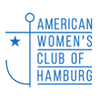President of the International Jury Berlinale 2010
This year’s International Jury of the Berlinale was presided over by Werner Herzog. He is one of the most significant personalities of German Cinema and has influenced an entire generation of filmmakers in his almost 50-year career. “Werner Herzog’s films convey the artistic strength of cinema. We are very pleased to have this outstanding director as Jury President for the 60th anniversary of the festival,” says Berlinale Director, Dieter Kosslick. Werner Herzog has so far made over 50 films including numerous impressive documentaries. Werner Herzog was part of the New German Cinema movement rebelling against the conservative filmmaking of the 1950s. He won the Carl Mayer Prize for the screenplay that was to become his first feature film in 1968, Signs of Life (Lebenszeichen), financed by the Kuratorium Junger Deutscher Film. In Berlin the film earned him the Silver Bear for the First Best Film.
In 1974 Herzog walked from Munich to Neuilly-sur-Seine near Paris to see the seriously ill Lotte Eisner, a German-French film critic, writer, historian and poet, in the faith that she would be well again when he arrived. He wrote a dairy about his pilgrimage entitled Vom Gehen im Eis (Walking on Ice) for which he received a literary award (Rauriser Literaturpreis). Lotte Eisner, fled from Nazi-Germany to France in 1933 and having survived the concentration camp, worked at the Cinémathèque Française as a chief archivist until her retirement in 1975. She was awarded membership in the French Legion of Honour in 1982, one year before she died. Wim Wenders, another influential German filmmaker, dedicated his film Paris, Texas (1984) to her memory.
Amongst Herzog’s well-known feature films are Aguirre: The Wrath of God (1972) with Klaus Kinski, who also starred in Nosferatu (1979). They made five films together despite a very controversial and complex relationship. In Herzog’s very personal documentary Mein liebster Feind (My Best Fiend, 1999), he traces the often violent ups and downs of working with the eccentric Klaus Kinski. For his epic film Fitzcarraldo (1982) the filmmaker received the Silver Palm in Cannes for best director, gaining him widespread acclaim. About his troubled shoot of Fitzcarraldo, the tale of a businessman who pulls a steamship over a hill in the jungle in order to get access to valuable rubber trees, he wrote the memoir “Conquest of the Useless.”
Since the 1980s Werner Herzog has also worked as an opera director, presenting his productions at the Bayreuth Festival and at La Scala, Milan. He is a writer, producer and is acting, for example in Harmony Korine’s Julien Donkey Boy (1999). Hollywood honoured him with an Oscar Nomination for Encounters at the End of the World (2007).
In 2009, Herzog became the only filmmaker in recent history to enter two films in the competition section during the same year at the prestigious Venice International Film Festival with My Son, My Son, What Have Ye Done and Bad Lieutenant: Port of Call New Orleans.
The Werner Herzog Rogue Film School, his newest project, had its first very successful three-day-workshop in January 2010 in which up-and-coming filmmakers submitted themselves to the tutelage of this exciting and thought-provoking director. As an example of what students may be expecting, I picked three of his eleven commandments from the school’s website:
• The Rogue Film School is about a way of life. It is about a climate, the excitement that makes film possible. It will be about poetry, films, music, images, literature.
• Censorship will be enforced. There will be no talk of shamans, of yoga classes, nutritional values, herbal teas, discovering your Boundaries, and Inner Growth.
• Follow your vision. Form secretive Rogue Cells everywhere. At the same time, be not afraid of solitude.
“The Rogue Film School is not for the faint-hearted,” said the filmmaker. “It is for those who have travelled on foot, who have worked as bouncers in sex clubs or as wardens in a lunatic asylum, for those who are willing to learn about lock-picking or forging shooting permits in countries not favouring their projects. In short: it is for those who have a sense for poetry. For those who are pilgrims. For those who can tell a story to four-year-old children and hold their attention. For those who have a fire burning within. For those who have a dream.”
Werner Herzog (born as Werner Stipetic on September 5, 1942) grew up on a farm in the Bavarian mountains. After his parents' divorce, he and his mother moved back to Munich where he attended high school. As a 14-year-old he already knew that he would be making movies. He studied history, literature and drama but never attended a film school and had no formal film education, explaining that he is proud of never using storyboards and that he is often improvising large parts of the script.
Herzog has been married three times and has three children. In 1995 he moved to the United States, and in 1999 married his third wife, the photographer Lena Pisetski. The couple live in Los Angeles and Munich. Recently, Werner Herzog donated his collection of screenplays, photos, posters, production materials and props to the Deutsche Kinemathek – Museum für Film und Fernsehen.
In 2009, TIME Magazine selected Werner Herzog as one of its 100 most influential people worldwide.
